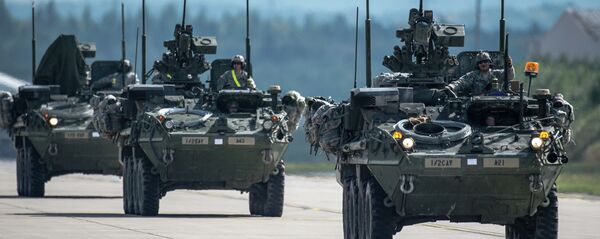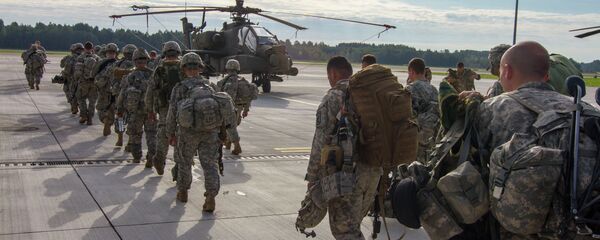Strategists responsible for shaping military formations in the region were shocked when Army experts explained how difficult the terrain is operate on in the region, the article read.
Taking into account major Russian forces across the border, "we were thinking heavy [equipment], quite honestly, but heavy has some limitations in this terrain," USAREUR’s Col. Jeffrey French was quoted as saying by Stars and Stripes.
"We need to start rethinking the types of formations we want to use," he added.
In Estonia, heavy tanks are capable only of driving by road. While off-road, armored machines sink into swamps favored by the country’s large moose population, engineers explained.
More light-weight attack vehicles such as Strykers should be deployed to the region, Col. French said.
Other obstacles are limited highway networks throughout the Baltic countries and a shortage of rail cars capable of carrying US tanks, according to the article. The only place with a surplus of rail cars is Russia.
"I’m not sure of their propensity for lending us rail cars in a time of need," Lt. Col. Steven Dowgielewicz, commander of the 39th Transportation Battalion, ironically noted.
Another problem emerges when it comes to transporting cargo into the Baltics where the rail system still functions on Russian-style gauges. That means offloading onto different cargo trains which would require special transport cars, the article read.
Taking into account the facts, US army experts doubt NATO’s capability to defend the Baltic countries if needed.
In this context, the Latvian website Lsm.Lv cited a 2000 article from Parameter, a US military magazine.
NATO should admit new member countries only if they can be effectively protected by the alliance and if their admittance is good for the alliance, the article read. By contrast, the admittance of the Baltics would weaken the alliance, provoke tensions with Russia and create only a semblance of security in the region which would be a precondition for a disaster, US military experts warned 15 years ago.




